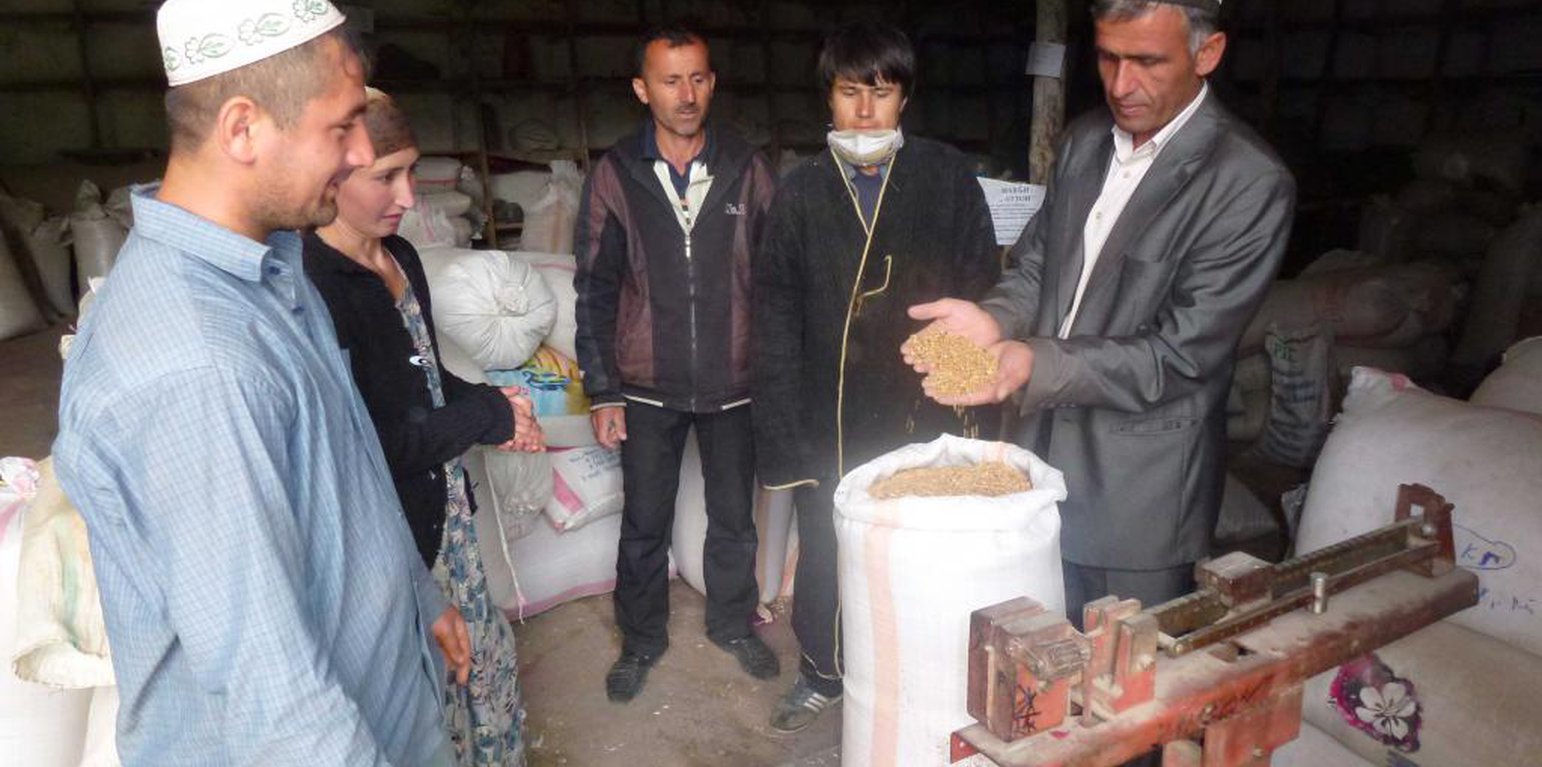



Aims / objectives: The aim of this approach is to provide a long term wheat seed bank to improve food security in the district of Muminabad, Tajikistan. Previously, there was a lack of readily available good quality seed that was appropriate to the soil, and climatic conditions of the area. The aim of the approach was to provide cost effective, appropriate wheat seeds to farmers with more than 5h.a. of land. The farmers receive training and onsite support during the cultivation period, and in return have to adopt a crop rotation system, and give back to the association 150% of the originally received seed stock. The association continues to cultivate, and test, high quality seeds on its own land for distribution, and for selling at the local market to generate revenue to cover its operational costs.
Methods: The Association's members have to stick to a set of pre-determined conditions in order to join, and so operations can be controlled. The members must implement changes in agricultural practices, to support the work of the association. In return the members receive high quality tested seed, training and a support network.
Stages of implementation: The initial set up of the wheat association was provided by INGO (Caritas Switzerland) who provided the initial funding and support, which was supplemented by the provision of a 150h.a of arable land by the government. The initial five members of the association were provided with training in organisational set up and business development, they employed the services of an agronomist to help acquire appropriate seeds and develop a seed bank on the arable land. The association registered as a legal entity, and the INGO provided co-funding for agricultural machinery and fuel, for the development of the seed bank. Once sufficient seed was accumulated to start distribution, farmers with just 5h.a. of irrigated land were invited to become members. The members had to provide land user documentation, accept to undertake crop rotation techniques, and follow the advice of the association’s agronomist in return for free seed.
Role of stakeholders: The role of the stakeholders is to follow all the rules of the association, which include the strict compliance with a set of pre-determined conditions laid out in a contract. There is a strong element of trust among the association and its members. Such an environment helps make the wheat growing in the district successful.
Other important information: The approach is highly reliant on effective communication between the association's specialists and it's members. The members communicate with specialists regarding technological issues, land management and other issues that are not clear in the process. In return, the association through the agronomist provides timely support, advice and materials (e.g. fertiliser, pesticides). If the members are very successful and produce high quality seed from the association’s batch, the association will buy all the seed the farmer cultivated, and use it to improve the seed stock of the district.
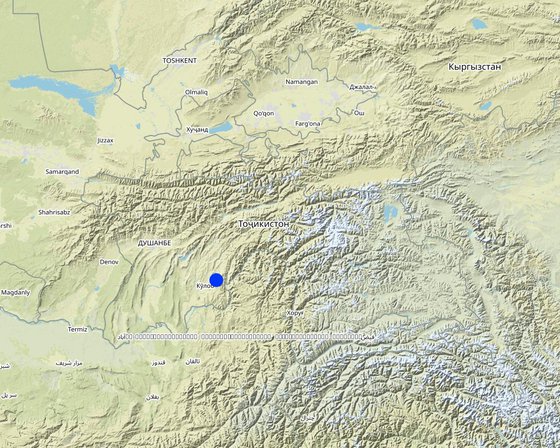
ສະຖານທີ່: Muminabad, Tajikistan, Khatlon, ຕາຈິກິສະຕານ
ວັນທີເລີ່ມຕົ້ນ: 2006
ປີຂອງການສິ້ນສຸດ: 2010
ປະເພດຂອງແນວທາງ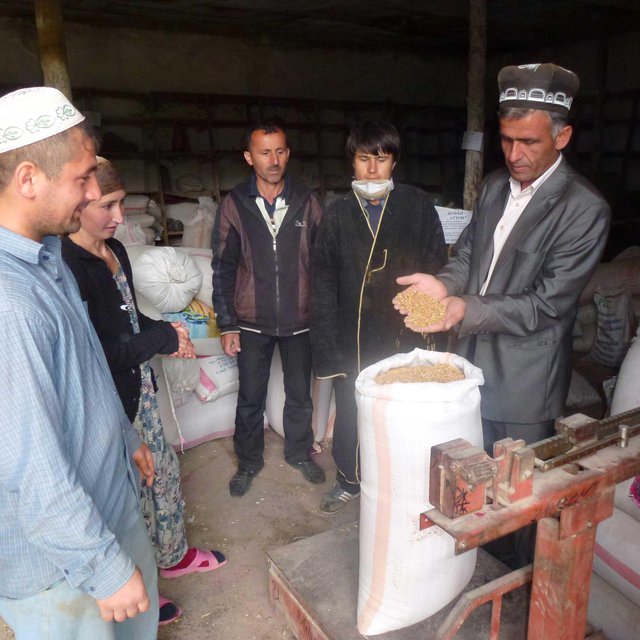
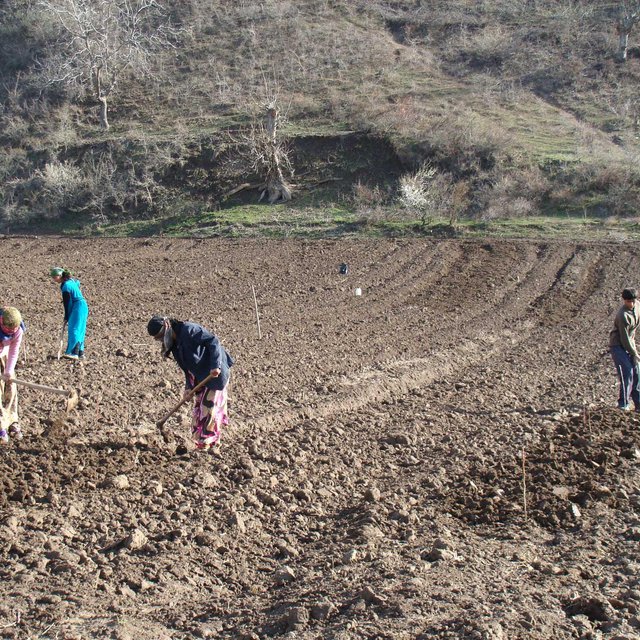
| ແມ່ນໃຜ / ພາກສ່ວນໃດ ທີ່ເປັນເຈົ້າການ ໃນການຈັດຕັ້ງປະຕິບັດ ວິທີການ? | ລະບຸ ພາກສ່ວນທີ່ກ່ຽວຂ້ອງ | ພັນລະນາ ບົດບາດ ໜ້າທີ່ ຂອງພາກສ່ວນທີ່ກ່ຽວຂ້ອງ |
| ຜູ້ນໍາໃຊ້ດິນໃນທ້ອງຖິ່ນ / ຊຸມຊົນທ້ອງຖິ່ນ | Land users with more than 5h.a. were the main target group. There are currently contracts in place with around 90 men and 9 women. This is due to the stipulation that the land user is required to have 5h.a of irrigated land before they will be provided with seed by the association. | A land user proposed the idea to the NGO, who developed the idea in collaboration with local agronomists. Supported in establishing and publicising the operations of the association. |
| ຜູ້ຊ່ຽວຊານ ການນຄຸ້ມຄອງ ທີ່ດິນແບບຍືນຍົງ / ທີ່ປຶກສາດ້ານກະສິກໍາ | ||
| ອົງການຈັດຕັ້ງ ທີ່ບໍ່ຂື້ນກັບລັດຖະບານ | International non-government | Financed the initial set up costs. |
| ອໍານາດ ການປົກຄອງທ້ອງຖິ່ນ | Supported by providing buildings, land and documentation. |
Organisational Chart showing the establishment set up of the Wheat Association
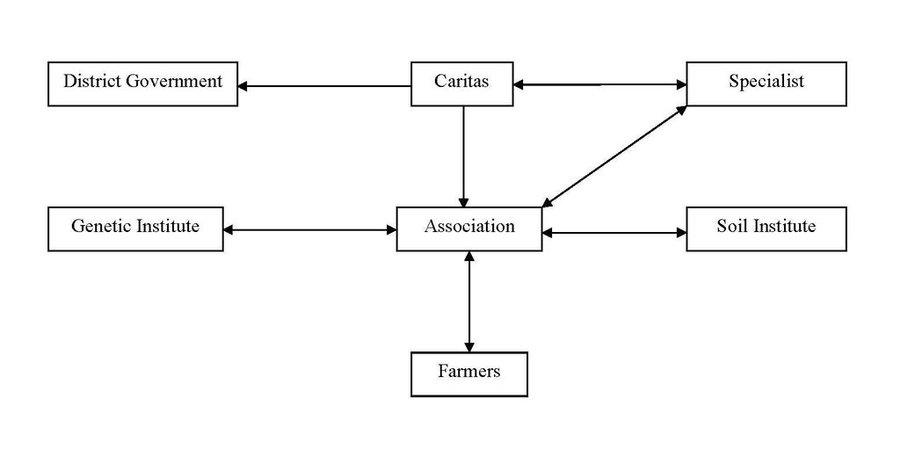
ການຕັດສິນໃຈໂດຍ
ການຕັດສິນໃຈບົນພື້ນຖານ
Workshops were conducted on wheat cultivation, crop rotation techniques, and seed types to the land users.
Research was conducted by the NGO on the most appropraite seed types for this agro-climatic zone.
Research was carried out both on station and on-farm
Tractors, fuel, ploughs,seed cleaning equipment.
ແຮງງານຂອງຜູ້ນໍ້າໃຊ້ທີ່ດິນ
Local laboratory, government agricutural department
The quality of the soil improved due the requirement of the association to introduce crop rotation methods to the areas used for wheat cultivation.
The assocaition is set up so that members have to return 150% of the seed that they use from the association. This seed is either sown, or sold on to continue to finance the assocaition's operational costs. The association also has the right to buy all the seed produced by one of its members if the cultivated seed is of exceptional quality.